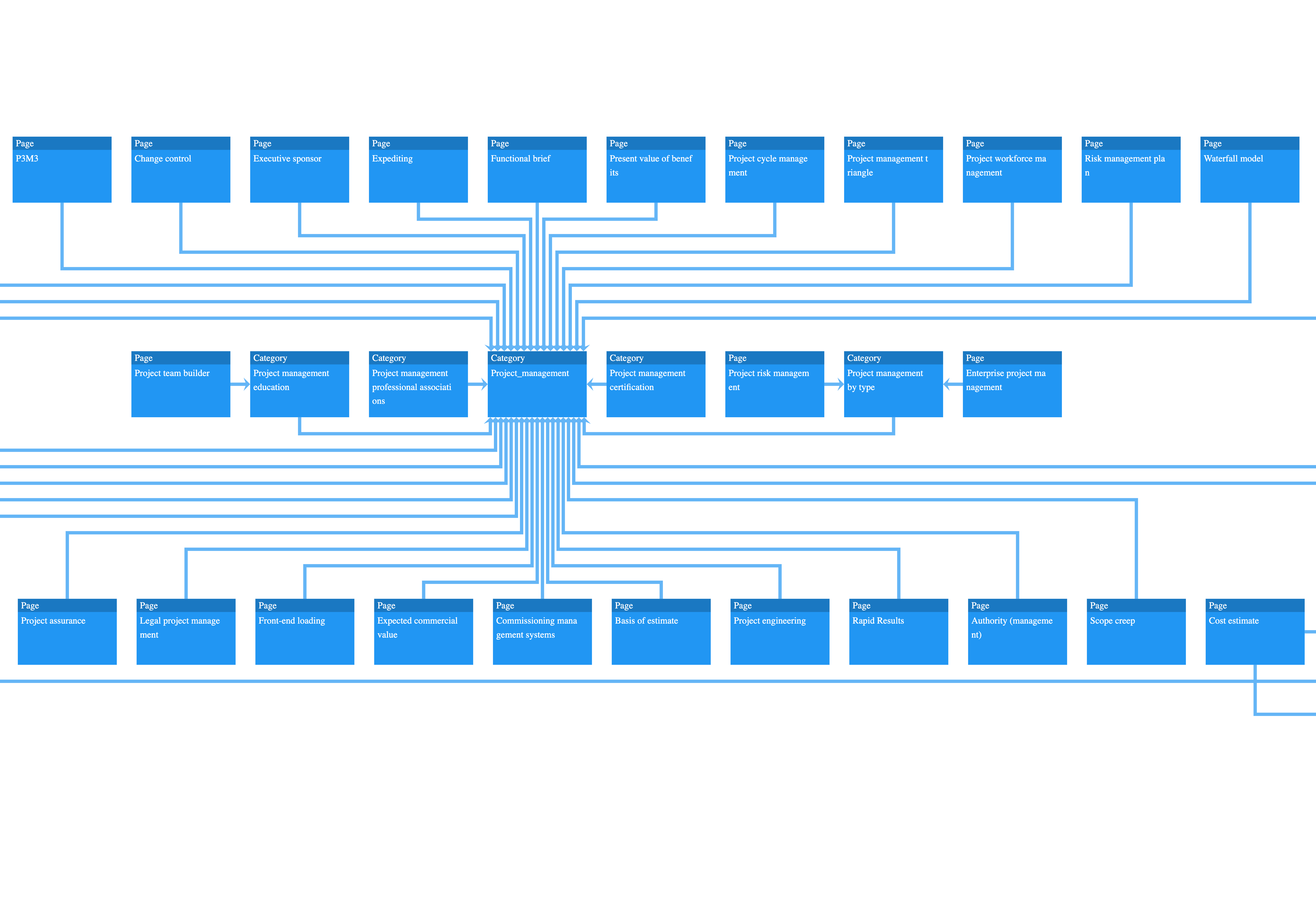Choose and develop a portfolio framework
- Purpose
- Motivation
- Code and library base
- Use cases
- Use case 1: Adopt a framework
- Use Case 2: Extract from existing framework
- Use case 3: Apply NLP to understand a particular business domain
- Other business examples (external to this site)
- FAQ
Purpose
-
Select practical portfolio frameworks for deployment as working-practice
-
Be able to adapt a portfolio framework to suit a particular business area and organisation.

Motivation
A portfolio framework sets out how the portfolio is managed.
This is also known as a:
-
Centre of Excellence
-
Project Lifecycle
-
Project Standards
-
Project Body of Knowledge
It is helpful to have a practice framework for project portfolio management that meets the needs of the organisation.
There are several excellent standard frameworks to begin from (Praxis, Axelos MoP etc) but they are often quite general.
It is recommended that your preferred framework is tailored to:
-
reflect how the portfolio is currently managed in reality
-
goes into more detail on working practices
-
is tailored to suit the particular business domain
-
is regularly updated as lessons are learned.
-
avoid prescribing unnecessary procedures.
Code and library base
If you wish to go straight to the code and document libraries, start here
Use cases
1.Adopt our framework to get started on new portfolio

2.Extract and modify from existing frameworks.

3.Apply Natural Language Processing to your current project documents to find the structure of your particular business domain.

Use case 1: Adopt a framework
We have a framework that has been built up across time through working on various portfolios. It can be a useful starting point which can then be tailored to meet the particular business needs. Guidance is provided here
Use Case 2: Extract from existing framework
There are other useful frameworks to start from. If you have a framework in mind, whether from a book, or from a particular standard, then this use case addresses the challenge of turning the general content into a framework that the team can use and adapt.
Use case 3: Apply NLP to understand a particular business domain
This is about taking a unique business area, company or portfolio, and using text-mining techniques to understand the main topics, categories and relationships within that domain. That then allows the team to create a portfolio management framework that meets the specific requirements and constraints of that business area.
Other business examples (external to this site)
FAQ
At what project level can this be applied ?
It can be applied at:
- project level
- programme level
- portfolio level
What is the difference between these frameworks and your data-models ?
Data models are described here
The frameworks are about management activities, but the data models are about the projects themselves.
In more detail:
-These frameworks are about the project management plans and processes for running the projects. (governance,reporting etc)
-The data models are about how the project data and reporting is structured to represent the important aspects of the project content, as well as what stakeholders and users experience from the project. (scope, outputs, outcomes etc)
-the data-model can influence the framework and vice versa, but it is helpful to distinguish the how from the what.
Are there any other frameworks elsewhere ?
I like to use whatever will be understood by my colleagues, or whatever has worked in the past in the same organisation. Going beyond the work on this site, other recommended starting points are:
-
Praxis P3M Open source comprehensive and thoughtful framework
-
Axelos Proprietary frameworks MoP, MSP and Prince. Managing Successful Programmes MSP Axelos because it clearly distinguishes programmes from projects, and it is clear about how to integrate with Business as usual via Business Change Managers or similar. Going this route, I would use PRINCE for the projects. Axelos P3M3 maturity framework for projects and programmes so that only programme process that will be understood will be used.
-
APM BOK and PMBOK are bodies of knowledge which are worth using for particular project types, especially regulatory or technical projects.
-
EU PM2 and Open PM2 is a straightforward framework used widely in the EU, useful for collaboration, mostly at project level.
-
For agile projects I would use whatever framework project members are most comfortable with. SCRUM or KANBAN is straightforward.
-
Cynefin sometimes for high consequence environments for organisational sense making.